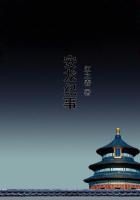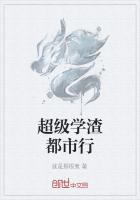"I did not, till yesterday, receive yours of the 5th of February;where it has loitered on the road I am at a loss to say.I had before read your very ingenious propositions as to the rail-way communication.I fear, however, on mature reflection, that they will be liable to serious objections, and ultimately more expensive than a canal.They must be double, so as to prevent the danger of two such heavy bodies meeting.The walls on which they are placed must at least be four feet below the surface, and three above, and must be clamped with iron, and even then, would hardly sustain so heavy a weight as you propose moving at the rate of four miles an hour on wheels.As to wood, it would not last a week; they must be covered with iron, and that too very thick and strong.The means of stopping these heavy carriages without a great shock, and of preventing them from running upon each other (for there would be many on the road at once) would be very difficult.In case of accidental stops, or the necessary stops to take wood and water &c many accidents would happen.The carriage of condensed water would be very troublesome.Upon the whole, I fear the expense would be much greater than that of canals, without being so convenient."** John Stevens, "Documents Tending to Prove the Superior Advantages of Rail-Ways and Steam-Carriages over Canal Navigation" (1819).Reprinted in "The Magazine of History with Notes and Queries", Extra Number 54 (1917).
Stevens, of course, could not convince the commissioners."The Communication from John Stevens, Esq.," was referred to a committee, who reported in March: "That they have considered the said communication with the attention due to a gentleman whose scientific researches and knowledge of mechanical powers entitle his opinions to great respect, and are sorry not to concur in them."Stevens, however, kept up the fight.He published all the correspondence, hoping to get aid from Congress for his design, and spread his propaganda far and wide.But the War of 1812 soon absorbed the attention of the country.Then came the Erie Canal, completed in 1825, and the extension into the Northwest of the great Cumberland Road.From St.Louis steamboats churned their way up the Missouri, connecting with the Santa Fe Trail to the Southwest and the Oregon Trail to the far Northwest.Horses, mules, and oxen carried the overland travelers, and none yet dreamed of being carried on the land by steam.
Back East, however, and across the sea in England, there were a few dreamers.Railways of wooden rails, sometimes covered with iron, on which wagons were drawn by horses, were common in Great Britain; some were in use very early in America.And on these railways, or tramways, men were now experimenting with steam, trying to harness it to do the work of horses.In England, Trevithick, Blenkinsop, Ericsson, Stephenson, and others; in America, John Stevens, now an old man but persistent in his plans as ever and with able sons to help him, had erected a circular railway at Hoboken as early as 1826, on which he ran a locomotive at the rate of twelve miles an hour.Then in 1828 Horatio Allen, of the Delaware and Hudson Canal Company, went over to England and brought back with him the Stourbridge Lion.This locomotive, though it was not a success in practice, appears to have been the first to turn a wheel on a regular railway within the United States.It was a seven days' wonder in New York when it arrived in May, 1829.Then Allen shipped it to Honesdale, Pennsylvania, where the Delaware and Hudson Canal Company had a tramway to bring down coal from the mountains to the terminal of the canal.
On the crude wooden rails of this tramway Allen placed the Stourbridge Lion and ran it successfully at the rate of ten miles an hour.But in actual service the Stourbridge Lion failed and was soon dismantled.
Pass now to Rainhill, England, and witness the birth of the modern locomotive, after all these years of labor.In the same year of 1829, on the morning of the 6th of October, a great crowd had assembled to see an extraordinary race--a race, in fact, without any parallel or precedent whatsoever.There were four entries but one dropped out, leaving three: The Novelty, John Braithwaite and John Ericsson; The Sanspareil, Timothy Hackworth;The Rocket, George and Robert Stephenson.These were not horses;they were locomotives.The directors of the London and Manchester Railway had offered a prize of five hundred pounds for the best locomotive, and here they were to try the issue.















